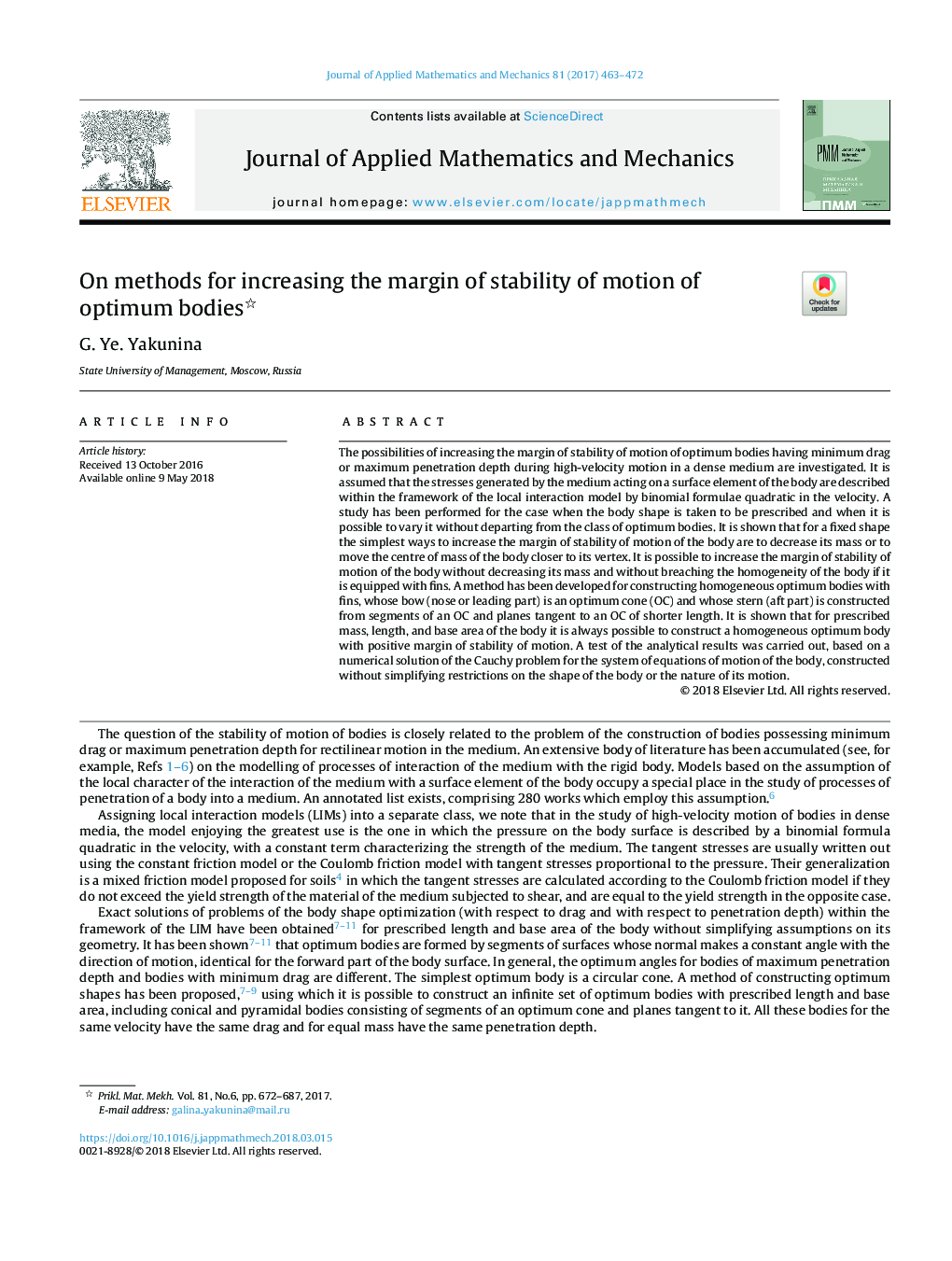| Article ID | Journal | Published Year | Pages | File Type |
|---|---|---|---|---|
| 7175548 | Journal of Applied Mathematics and Mechanics | 2017 | 10 Pages |
Abstract
The possibilities of increasing the margin of stability of motion of optimum bodies having minimum drag or maximum penetration depth during high-velocity motion in a dense medium are investigated. It is assumed that the stresses generated by the medium acting on a surface element of the body are described within the framework of the local interaction model by binomial formulae quadratic in the velocity. A study has been performed for the case when the body shape is taken to be prescribed and when it is possible to vary it without departing from the class of optimum bodies. It is shown that for a fixed shape the simplest ways to increase the margin of stability of motion of the body are to decrease its mass or to move the centre of mass of the body closer to its vertex. It is possible to increase the margin of stability of motion of the body without decreasing its mass and without breaching the homogeneity of the body if it is equipped with fins. A method has been developed for constructing homogeneous optimum bodies with fins, whose bow (nose or leading part) is an optimum cone (OC) and whose stern (aft part) is constructed from segments of an OC and planes tangent to an OC of shorter length. It is shown that for prescribed mass, length, and base area of the body it is always possible to construct a homogeneous optimum body with positive margin of stability of motion. A test of the analytical results was carried out, based on a numerical solution of the Cauchy problem for the system of equations of motion of the body, constructed without simplifying restrictions on the shape of the body or the nature of its motion.
Related Topics
Physical Sciences and Engineering
Engineering
Mechanical Engineering
Authors
G. Ye. Yakunina,
